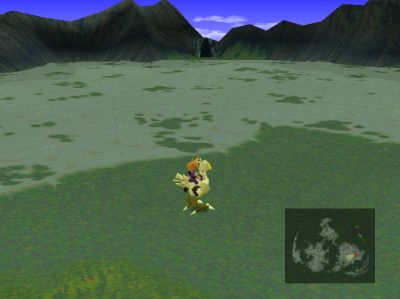In terms of gaming experiences however that's a whole different ball game.
With certain caveats, the following sentance is true.
PLAYERS DON'T KNOW WHAT THEY WANT......UNTIL IT IS GIVEN TO THEM!
I honestly believe the above sentence is true..
HOWEVER..
This applies to new types of gameplay. It is not true about environment design.
If I am mapping for a specific game, the player comes to my map with a specific set of expectations. These expectations were set when they played the official game.
They expect a reasonable level of mapping capability so that the map I create looks reasonably like that which I am purporting it to be.
If I tell the player that my map is set in some docks, my map should look pretty much like a docking area, with boats, jettys etc.. and plenty of the details filled in.
If I just throw a blockmap together with a few water brushes and some boat models it's very hard for the player to suspend their disbelief and get into the zone.
The Visual Dictionary
In games such as Portal and Half Life 2, a visual dictionary has been built by the player as they interacted with the game.
For example... in Half-Life 2 a red metal barrel is explosive.
This is understood by anyone who's played Half-Life 2. Through playing the game they have built up a set of expectations about how the game world works.
If I decide I'm going to make the red metal barrels er... unexplosive (?) then I first need to let the player know that in my map the visual dictionary has been altered.
So how do I do that...?
Player Training
Training the player in a new form of gameplay is a slightly laborious process, but it can also be very fun for the player and you can work it seemlessly into your map.
First I introduce the player to the idea, normally through an NPC telling the player about that idea (you could use screen text if you're feeling lazy) or through a demonstration that the player can watch and learn (think, NPC walks into trap before you get to it).
Then I ask the player to solve a puzzle using the new form of gameplay in a safe environment where they can take their time and learn at their own pace.
I may want them to repeat the action several times just to be sure they understand it.
Then finally I am ready to introduce the player to the idea under pressure, i.e. during a firefight.
I have learned that it is really infuriating for players if you try to introduce an idea in a moment of action. The player doesn't have time to absorb the information or learn anything at such times. They are simply concentrating on the cross hairs under their noses.
Progress is reward
The thing the player wants the most is to progress forward through you're map. The goal don't forget is to complete the experience, so to move forward is to get closer to that goal. The challenge is to throw enough barriers in the way of them moving forward for it to be enjoyable but not too many that it becomes annoying.
I remember playing Final Fantasy 7 on the Playstation and yelling at the screen every time I was trying to travel across the world and got sucked into a fight. There's a lesson to be learned here in my opinion. Barriers to progress should be varied and interesting.
What are the chances of me getting to the cave without a sodding fight?

The constant interruptions to my progress in FF7, in the same format, and the same stupid sound effect (anyone who knows the FF games will know that dreaded sound) just grew too annoying.
I never finished it by the way.
No comments:
Post a Comment